SR100
RONWIN
A non-driven roller conveyor, also known as a gravity roller conveyor, is a simple, versatile, and cost-effective material handling system. Its core principle is using gravity or manual force to move items. The rollers are not connected to a motor; instead, they spin freely on their axles. Items placed on the conveyor move downward when the conveyor is set on a slight decline, or are pushed along a level section.
Non-driven roller conveyors are ubiquitous in industries where goods need to be moved efficiently over short to medium distances. Their applications include:
Loading and Unloading: The most common application is at truck loading docks. Goods can be easily unloaded from a truck and guided down a decline conveyor to a sorting area, or loaded by pushing them up into the truck.
Assembly Lines: Used in manufacturing to move parts or products between workstations. Operators can rotate the item in place for assembly without the constraint of a powered belt.
Accumulation and Staging: Ideal for temporarily holding products before the next step in the process (e.g., before packaging, inspection, or shipping). Because there's no pressure from a moving belt, items can rest without back-pressure.
Sortation and Order Picking: In warehouses, gravity conveyors are used in pick modules. Order pickers can walk alongside the conveyor, picking items from shelves and placing them on the rollers to glide down to the packing station.
Packing and Staging Areas: Used on packing benches where workers need to move packed cartons away from their station effortlessly.
Connecting Powered Conveyor Sections: They act as inexpensive bridging sections between two powered conveyors (e.g., between a belt conveyor and a roller conveyor).
The features of non-driven roller conveyors make them suitable for the applications above.
Cost-Effective: They have a very low initial cost compared to powered conveyor systems. There are no motors, drives, or electrical components to purchase or install.
Low Maintenance: With no motors, drives, or complex controls, there is very little that can break down. Maintenance typically involves only ensuring the rollers spin freely and occasionally lubricating bearings.
Simple to Install and Flexible: They are modular and can be easily set up, reconfigured, or relocated without specialized technical skills. They can be built into straight sections, curves, and spur lines.
Energy Efficient: They consume zero electricity, making them an environmentally friendly and low-operational-cost option.
Quiet Operation: The only sound is the rolling of the items and the rollers, making them ideal for work environments where noise is a concern.
Versatile Load Handling: Can handle a wide range of item sizes, weights, and materials, provided the items have a rigid, flat bottom. They are excellent for cartons, totes, drums, and pallets.
Requires a Decline or Manual Force: To move without manual pushing, the conveyor must be set on a downward slope (typically 1.5% to 3% depending on the weight of the load). On a level surface, items must be pushed.
Limited Control: There is no ability to control the speed, start, or stop the conveyor automatically. Items will continue rolling until they meet resistance (another item, a stop, or the end of the line).
Not for Fragile or Unstable Loads: The movement relies on gravity, which can cause items to gain speed and collide if not controlled properly. Items with an uneven or soft bottom are not suitable.
Limited to Straight-Line or Simple Curved Paths: While curves are available, complex routing and vertical lifting are impossible without a powered system.
| Feature | Description | Implication |
|---|---|---|
| Power Source | Gravity or Manual Push | Pro: Zero energy cost. Con: Requires a slope or human effort. |
| Cost | Low initial investment | Highly economical for simple material flow. |
| Maintenance | Very low | Reduced downtime and maintenance staff costs. |
| Noise Level | Very quiet | Suitable for offices, retail backrooms, and quiet assembly areas. |
| Load Control | Minimal | Not suitable for precise positioning or automated processes. |
| Flexibility | High (Modular) | Easy to adapt to changing layout needs. |
| Load Type | Rigid, flat-bottomed items | Not for bags, loose parts, or irregular shapes. |
In conclusion, the non-driven roller conveyor is the workhorse of simple material handling. Its application is centered anywhere there is a need for inexpensive, reliable, and low-maintenance movement of sturdy items where full automation is not required.
Model no. -rack inner width(W)-rack height(H)-rack length(L)-roller diameter(D)-roller pitch(P)
Order no. example(unit mm): SR100-500-600-1000-50-75

| Specifications of SR100 Non-driven Straight Roller Conveyor | |
|---|---|
| roller diameter (mm) | 25, 38, 50, 60, 76, 80, 89 |
| roller pitch (mm) | 75, 100, 150 |
| rack length | 2m, 3m4m, 5m or on customer's request |
| rack inner width (mm) | 500, 600, 700, 800, 900, 1000, 15000 or on customer's request |
| rack height (mm) | 300-1500, suggest 400 |
| rack material | steel folded-plate, Aluminium profile |
| support leg material | rectagular steel tube, Aluminium profile |
| conveyor color | plastic spary, color is on customer's request |
Gravity roller conveyor module for carton flow rack system
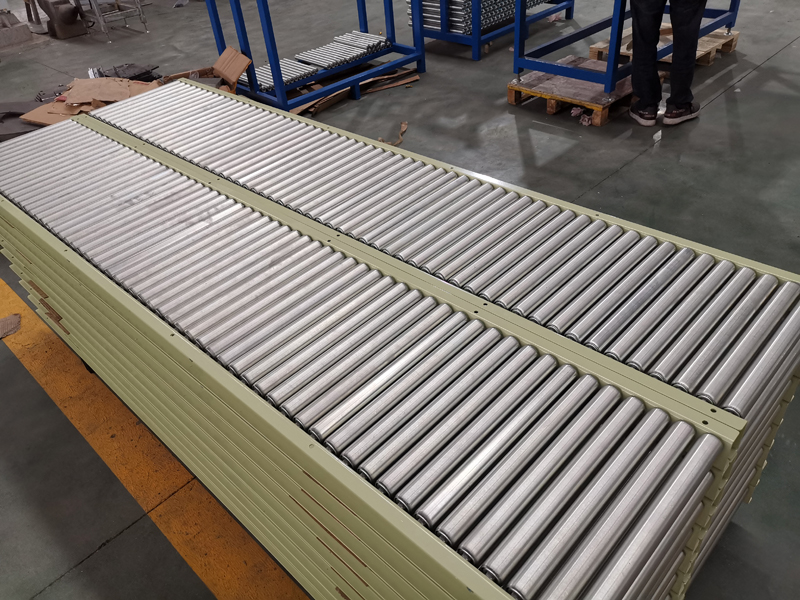
Gravity roller conveyor with castor for the transport of box packed material

Gravtity roller conveyor with end stop for furniture factory
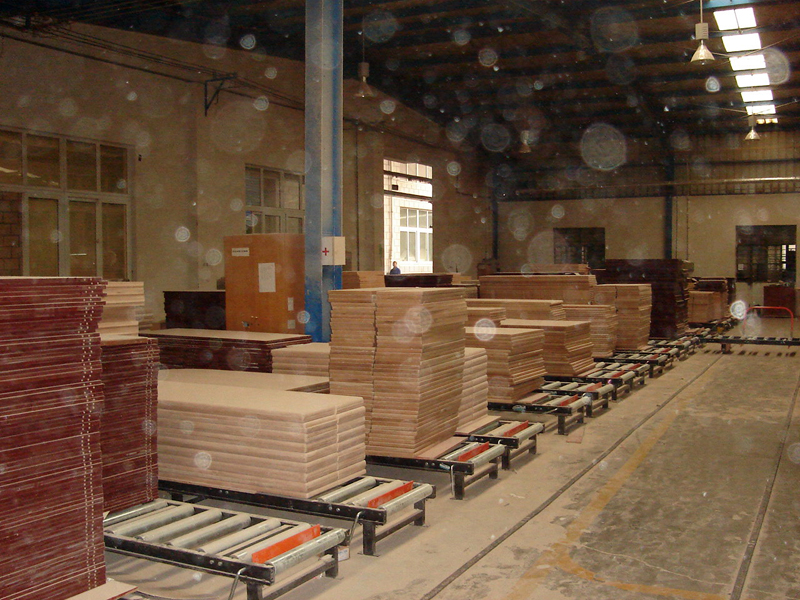
Gravity roller rails for warehouse internal logistics
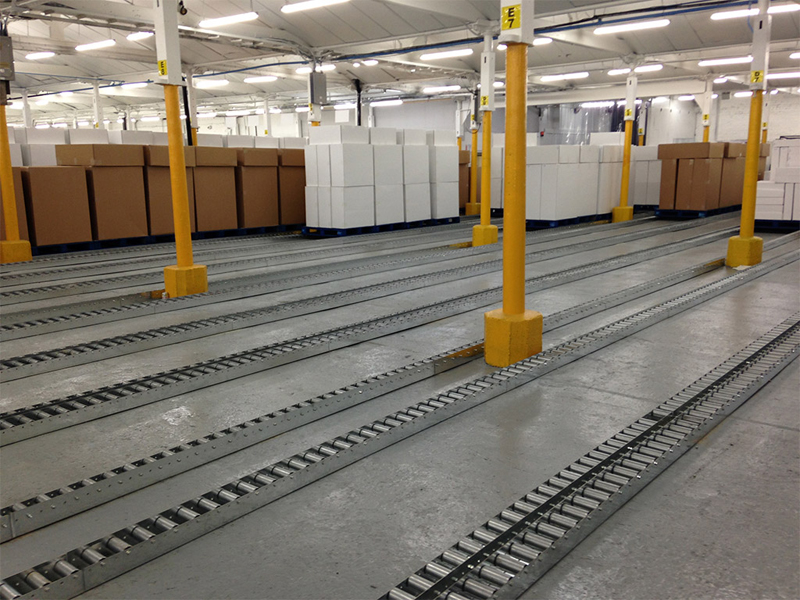
Gravtity roller conveyor with end stop for door production factory
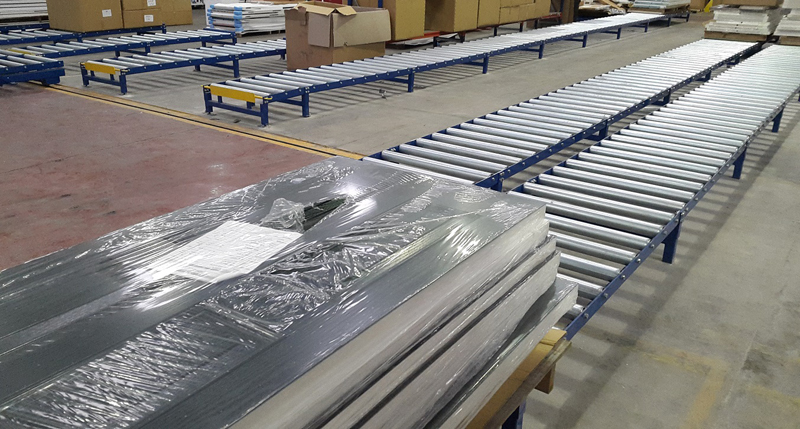
Roller conveyor module for pallet flow handling sytems
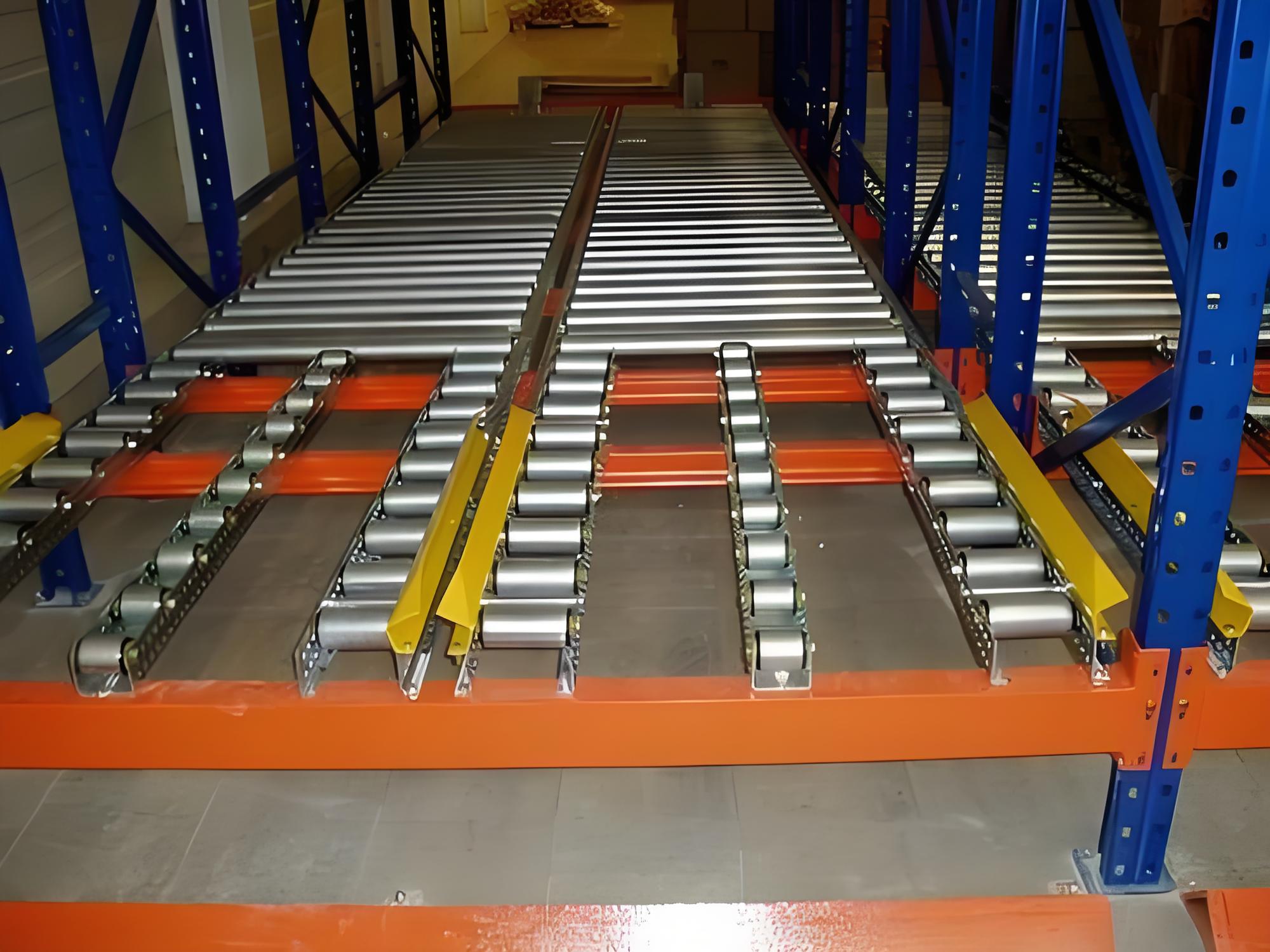
A non-driven roller conveyor, also known as a gravity roller conveyor, is a simple, versatile, and cost-effective material handling system. Its core principle is using gravity or manual force to move items. The rollers are not connected to a motor; instead, they spin freely on their axles. Items placed on the conveyor move downward when the conveyor is set on a slight decline, or are pushed along a level section.
Non-driven roller conveyors are ubiquitous in industries where goods need to be moved efficiently over short to medium distances. Their applications include:
Loading and Unloading: The most common application is at truck loading docks. Goods can be easily unloaded from a truck and guided down a decline conveyor to a sorting area, or loaded by pushing them up into the truck.
Assembly Lines: Used in manufacturing to move parts or products between workstations. Operators can rotate the item in place for assembly without the constraint of a powered belt.
Accumulation and Staging: Ideal for temporarily holding products before the next step in the process (e.g., before packaging, inspection, or shipping). Because there's no pressure from a moving belt, items can rest without back-pressure.
Sortation and Order Picking: In warehouses, gravity conveyors are used in pick modules. Order pickers can walk alongside the conveyor, picking items from shelves and placing them on the rollers to glide down to the packing station.
Packing and Staging Areas: Used on packing benches where workers need to move packed cartons away from their station effortlessly.
Connecting Powered Conveyor Sections: They act as inexpensive bridging sections between two powered conveyors (e.g., between a belt conveyor and a roller conveyor).
The features of non-driven roller conveyors make them suitable for the applications above.
Cost-Effective: They have a very low initial cost compared to powered conveyor systems. There are no motors, drives, or electrical components to purchase or install.
Low Maintenance: With no motors, drives, or complex controls, there is very little that can break down. Maintenance typically involves only ensuring the rollers spin freely and occasionally lubricating bearings.
Simple to Install and Flexible: They are modular and can be easily set up, reconfigured, or relocated without specialized technical skills. They can be built into straight sections, curves, and spur lines.
Energy Efficient: They consume zero electricity, making them an environmentally friendly and low-operational-cost option.
Quiet Operation: The only sound is the rolling of the items and the rollers, making them ideal for work environments where noise is a concern.
Versatile Load Handling: Can handle a wide range of item sizes, weights, and materials, provided the items have a rigid, flat bottom. They are excellent for cartons, totes, drums, and pallets.
Requires a Decline or Manual Force: To move without manual pushing, the conveyor must be set on a downward slope (typically 1.5% to 3% depending on the weight of the load). On a level surface, items must be pushed.
Limited Control: There is no ability to control the speed, start, or stop the conveyor automatically. Items will continue rolling until they meet resistance (another item, a stop, or the end of the line).
Not for Fragile or Unstable Loads: The movement relies on gravity, which can cause items to gain speed and collide if not controlled properly. Items with an uneven or soft bottom are not suitable.
Limited to Straight-Line or Simple Curved Paths: While curves are available, complex routing and vertical lifting are impossible without a powered system.
| Feature | Description | Implication |
|---|---|---|
| Power Source | Gravity or Manual Push | Pro: Zero energy cost. Con: Requires a slope or human effort. |
| Cost | Low initial investment | Highly economical for simple material flow. |
| Maintenance | Very low | Reduced downtime and maintenance staff costs. |
| Noise Level | Very quiet | Suitable for offices, retail backrooms, and quiet assembly areas. |
| Load Control | Minimal | Not suitable for precise positioning or automated processes. |
| Flexibility | High (Modular) | Easy to adapt to changing layout needs. |
| Load Type | Rigid, flat-bottomed items | Not for bags, loose parts, or irregular shapes. |
In conclusion, the non-driven roller conveyor is the workhorse of simple material handling. Its application is centered anywhere there is a need for inexpensive, reliable, and low-maintenance movement of sturdy items where full automation is not required.
Model no. -rack inner width(W)-rack height(H)-rack length(L)-roller diameter(D)-roller pitch(P)
Order no. example(unit mm): SR100-500-600-1000-50-75

| Specifications of SR100 Non-driven Straight Roller Conveyor | |
|---|---|
| roller diameter (mm) | 25, 38, 50, 60, 76, 80, 89 |
| roller pitch (mm) | 75, 100, 150 |
| rack length | 2m, 3m4m, 5m or on customer's request |
| rack inner width (mm) | 500, 600, 700, 800, 900, 1000, 15000 or on customer's request |
| rack height (mm) | 300-1500, suggest 400 |
| rack material | steel folded-plate, Aluminium profile |
| support leg material | rectagular steel tube, Aluminium profile |
| conveyor color | plastic spary, color is on customer's request |
Gravity roller conveyor module for carton flow rack system

Gravity roller conveyor with castor for the transport of box packed material

Gravtity roller conveyor with end stop for furniture factory

Gravity roller rails for warehouse internal logistics

Gravtity roller conveyor with end stop for door production factory

Roller conveyor module for pallet flow handling sytems
